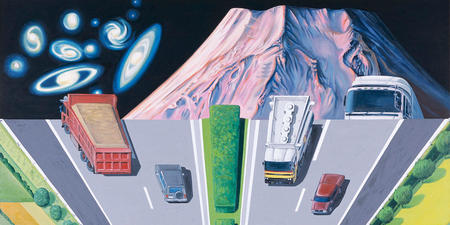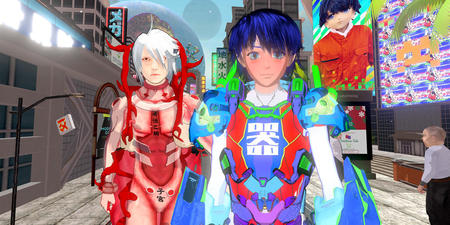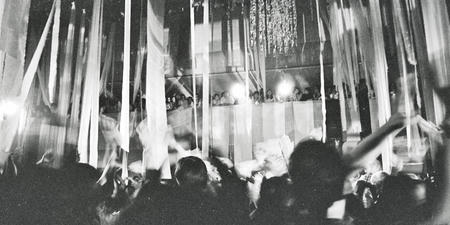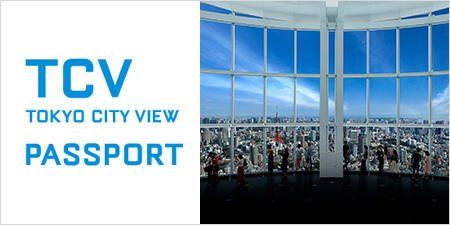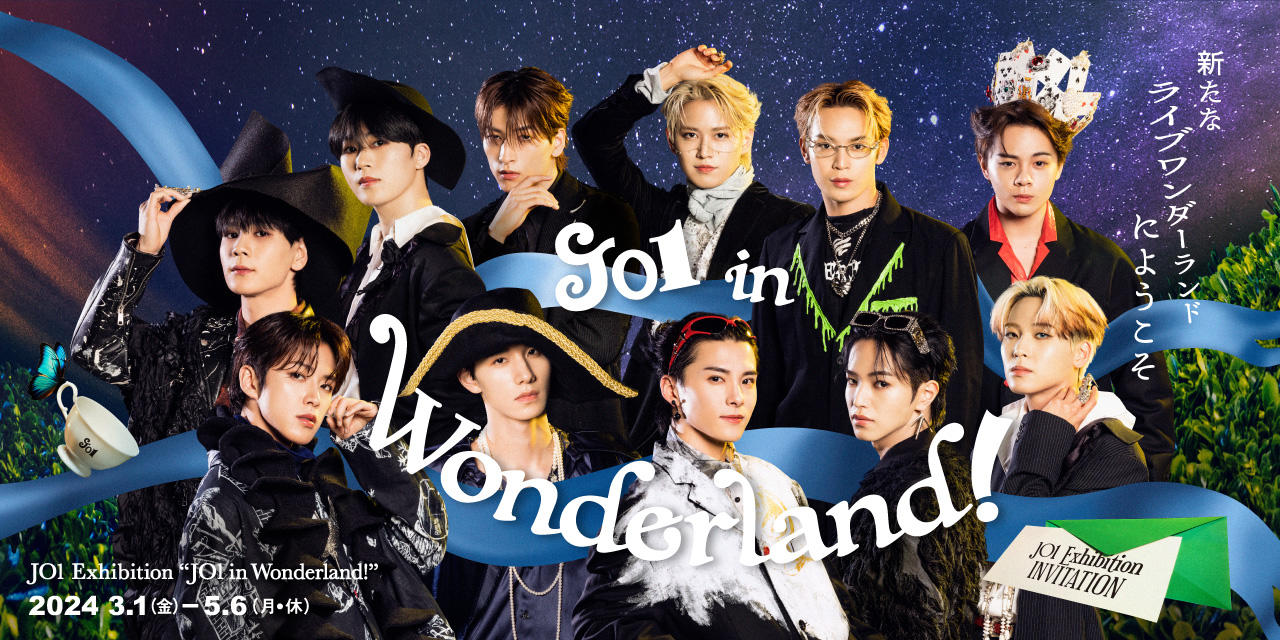List of Works
Download the Chim↑Pom: Happy Spring work list. (PDF/241KB)
About the Works / Projects
- SUPER RAT
- BLACK OF DEATH
- Build-Burger
- Street
- “A Drunk Pandemic”
- Gold Experience
- KOKKURISAN TATTOO
- Don’t Follow the Wind
- Making the Sky of Hiroshima “PIKA!”
- PAVILION
- Non-Burnable
- We Don’t Know God
- Never Give Up
- LEVEL7 feat. “Myth of Tomorrow”
- REAL TIMES
- KI-AI 100
- “The other side”
- “May, 2020, Tokyo”
- “Thank You Celeb Project - I’m BOKAN”
SUPER RAT
2006
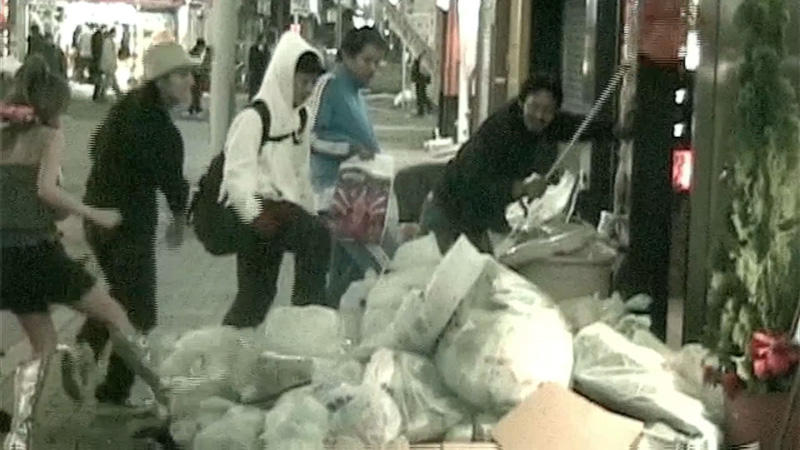
2006
Video
2 min. 53 sec.
Courtesy: ANOMALY and MUJIN-TO Production, Tokyo
“Super Rat” is a term coined by pest controllers for a new, more aggressive and resilient breed of rat with a higher resistance to conventional rat poisons. Such rats are said to have appeared during environmental cleanup efforts in Tokyo that were launched in preparation for the 1964 Olympics. Chim↑Pom from Smappa!Group began this series in 2006 when the proliferation of super rats in urban areas had become a significant problem. This installation consists of rats captured with nets in various downtown areas in Tokyo such as Shibuya and Shinjuku that were then stuffed and presented alongside a video documenting their capture. As the “urban wild,” the super rat, in seeking to toughen itself up and coexist with humans by evolving in the face of a hostile environment, is a “portrait” of Chim↑Pom from Smappa!Group, who unflinchingly persist in their activities from the outskirts of society. Since the accident at the Fukushima Daiichi Nuclear Power Plant in 2011, this work has also come to serve as a metaphor for people living in Japan, forced to reassess their lifestyles in the wake of radioactive contamination.
BLACK OF DEATH
2007/2013
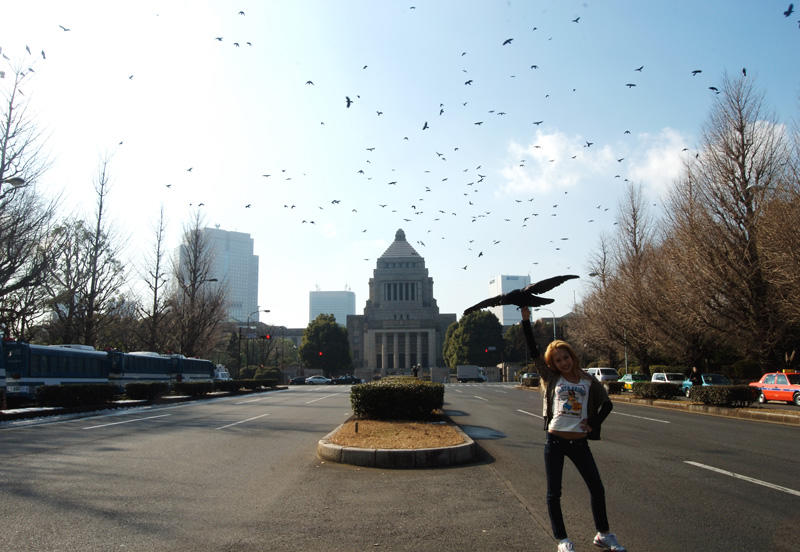
2008
Lambda print, video
81 x 117.5 cm (photo), 9 min. 13 sec. (video)
Courtesy: ANOMALY and MUJIN-TO Production, Tokyo
In 2007, a large number of crows gathered in the skies above various parts of Tokyo including the busy streets of Shibuya and the National Diet Building. Chim↑Pom from Smappa!Group had circled the city’s streets by motorcycle and car with a stuffed crow in hand, playing the sounds of crows crying from speakers. These cries were pre-recordings of sounds that crows actually make when calling others, leading hordes of crows to follow them in hopes of saving their fellow kind that had presumably been captured by humans. This work consists of a video and photographs documenting these actions.
In Tokyo at the time, the proliferation of crows and their evolution into a larger and more intelligent species due to increasing amounts of garbage, food waste, and food loss had become a significant problem. In addition, according to the superstition that a “crying crow is a harbinger of a person’s death,” crows are sometimes regarded as ominous creatures in Japan. In this work, however, crows, which are generally dreaded and detested, are depicted in a positive and lighthearted manner as resilient creatures that endure within the city, just like human beings. After the Great East Japan Earthquake, Chim↑Pom from Smappa!Group produced BLACK OF DEATH 2013, featuring footage of the exclusion zone in Fukushima that had become infested with crows in the absence of its residents, the Expo ’70 Commemorative Park in Osaka, and again in the streets of Shibuya.
Build-Burger
2016/2018
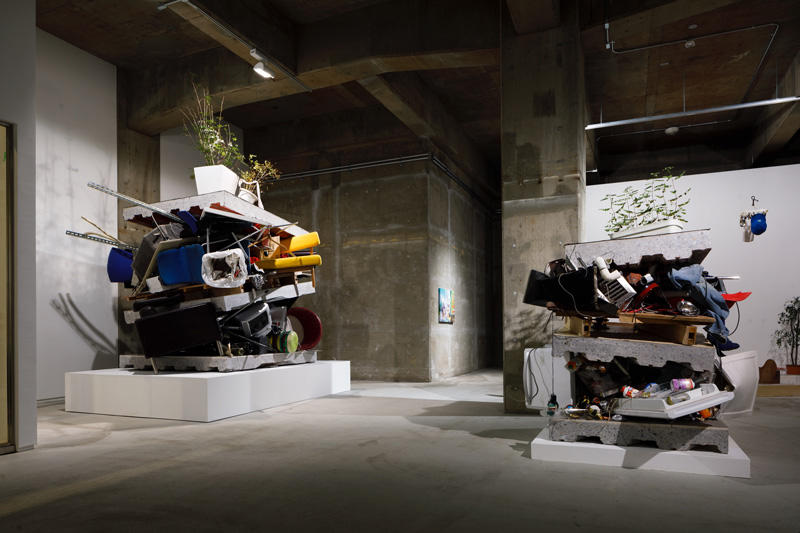
2018
Mixed media (3 layers of concrete floors cropped from “Ningen Restaurant,” various furniture and objects from each floor of the building)
400 x 360 x 280 cm (left), 186 x 170 x 155 cm (right)
In cooperation with Ningen Restaurant, Smappa! Group, Koto Hiroya
Private collection (left)
Courtesy: ANOMALY, Tokyo
Installation view: Grand Open - Marvelous Liberation -, ANOMALY, Tokyo, 2018
Photo: Morita Kenji
In 2016, Chim↑Pom from Smappa!Group self-organized the solo exhibition So see you again tomorrow, too? at the Kabuki-cho Shopping Center Promotion Union Building in Tokyo, just before its demolition. Conceived for this occasion was a work created by cutting a square piece out of the 4th, 3rd, and 2nd floors of the building and directly piling it onto the 1st floor. This massive sculpture can be likened to a hamburger that has fallen due to gravity while sandwiching the remnants of each level including furniture, fixtures, and posters between the floors. With its architectural quality that derives from the way in which it uses a section of the building, this work embodied the exhibition theme of “scrap & build” - an approach to urban development in modern Japan that favors knocking down and starting again over renovation or reuse. Chim↑Pom from Smappa!Group themselves describe this work as “reminiscent of the fast food-like mass production and mass consumption in cities.” This exhibition presents two works from the “Build-Burger” series produced for the performance-based event “Ningen (Human) Restaurant,” which subsequently took place in 2018 in another building in Kabuki-cho that was scheduled for demolition.
Street
2017-2018
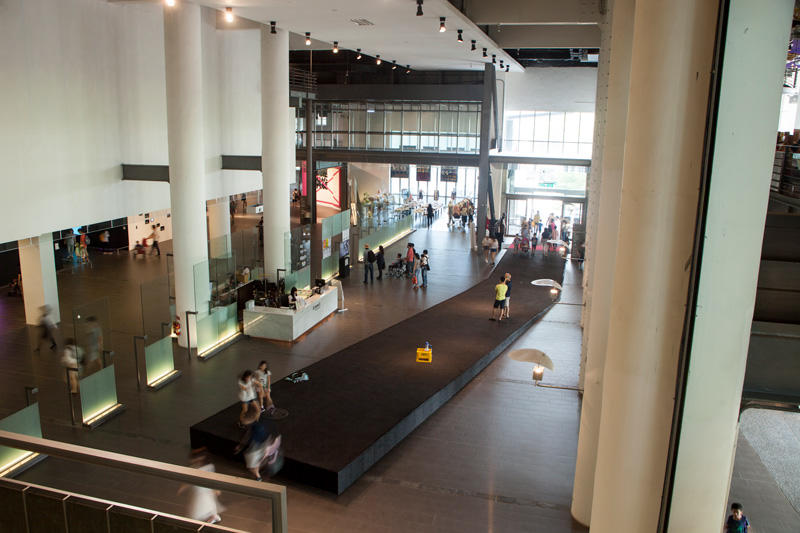
2017-2018
On-site installation
Dimensions variable
Courtesy: ANOMALY and MUJIN-TO Production, Tokyo
Installation view: Asian Art Biennial 2017, National Taiwan Museum of Fine Arts, Taichung, 2017-2018
Photo: Maeda Yuki
For their project for the Asian Art Biennale 2017 held at the National Taiwan Museum of Fine Arts, Chim↑Pom from Smappa!Group created a 200-meter long asphalt street that connected the inside of the museum with the outside. Chim↑Pom from Smappa!Group not only negotiated with the museum and the general public to establish and enforce a unique set of regulations for this street, which they considered as an alternative public space that is neither a public road nor museum property, but also took control of its operations in a bid to develop its potential. For example, while acts of violence were forbidden on the “street,” protests and the consumption of alcohol, which are both normally prohibited in museums, could be carried out as a performance. A block party (organized and curated by Betty Apple) that anyone could join was also held during the project period, and by soliciting ideas and proposals for how the street might be used from the general public, Chim↑Pom from Smappa!Group sought to maximize the potential of the National Museum, opening it up to the public in a true sense.
This work derives from Chim↑Pom from Smappa!Group’s interest in the “Sunflower Student Movement” of 2014 in which a coalition of students and civic groups occupied the Legislative Yuan in Taiwan and created a significant impact on society, and is based on a series of interviews conducted with those who participated in the protests. Focusing on the “street” where “acts of expression” such as the voicing of opinions, protests, and performances have historically been carried out in a similar way to the public space of the Legislative Yuan, this work serves to raise various questions about the meaning of the “public,” “individual,” and “art.”
“A Drunk Pandemic”
2019-2020
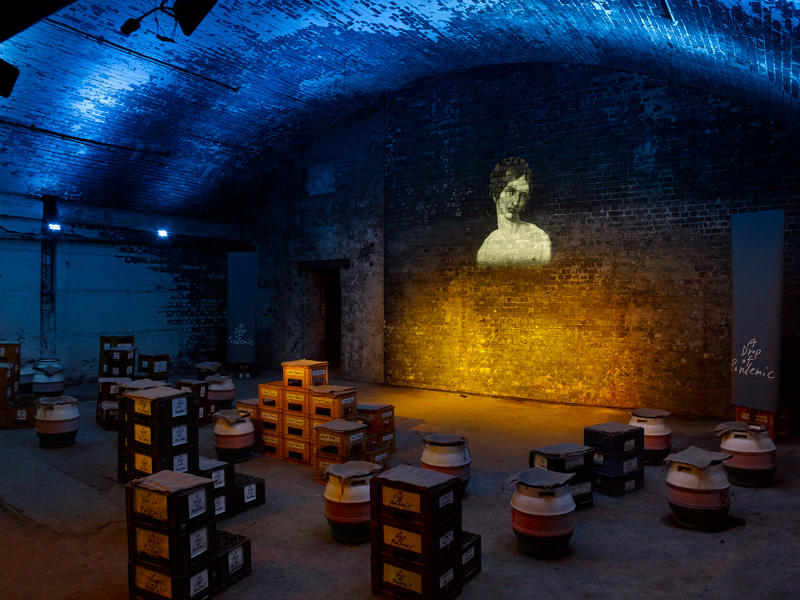
2019-2020
Private collection
Commissioned and produced by Manchester International Festival and Contact, 2019
Curated by Contact Young Curators
Courtesy: ANOMALY and MUJIN-TO Production, Tokyo
Photo: Michael Pollard
This project was conceived when Chim↑Pom from Smappa!Group participated in the Manchester International Festival 2019. The many people who fell victim to and lost their lives to the cholera epidemic that swept the city in the 19th century were buried under Manchester’s Victoria Station. Chim↑Pom from Smappa!Group opened a brewery in a tunnel beneath this historic ruin and brewed an original beer called “A Drop of Pandemic,” serving it to people in a portable public toilet converted into a pub. The project was inspired by the fact that beer was considered safer to drink than fresh water during the cholera and plague outbreaks of the past, as boiling the water was a vital step in the brewing process. Building bricks were produced by mixing cement with disinfected sewage containing the urine of visitors collected from the pub’s toilets, and then provided to various streets and houses around the city where repair and maintenance were needed.
In Manchester, whose population had burgeoned due to the Industrial Revolution, poor sanitation caused by rapid urbanization at the time was one of the main causes of the cholera pandemic, which spurred improvements in building infrastructure, sewage, and sanitation in order to deal with this problem. This project serves to visualize these issues that are particularly pronounced in urban settings. Furthermore, as many cholera sufferers came from the city’s poorer communities and the working class, the rich regarded them as “immoral people” responsible for spreading the plague, leading to discrimination against cholera patients. In the current COVID-19 pandemic, so-called “essential workers” are at higher risk of infection, and various businesses including those of the “nightlife districts” have been faced with rampant COVID-related discrimination. Evidently, the darker underbelly of the city and the essence of discrimination remain unchanged even in the 21st century.
Gold Experience
2012
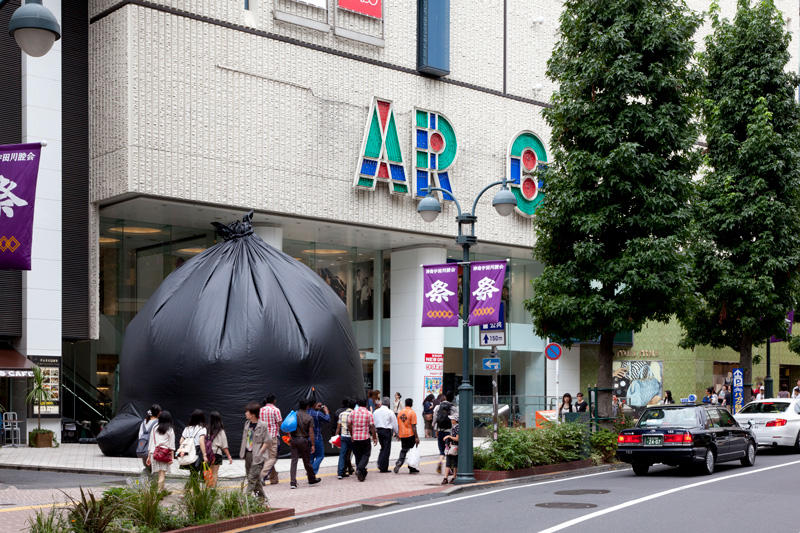
2012
Tarpaulin balloon, mixed media
650 x 800 x 600 cm
Courtesy: ANOMALY and MUJIN-TO Production, Tokyo
Installation view: Chim↑Pom, PARCO Museum, Tokyo, 2012
This gigantic balloon-shaped installation work was produced on the occasion of Chim↑Pom from Smappa!Group’s solo exhibition at PARCO Museum Tokyo in 2012. Viewers could enter a work that looked like a black plastic garbage bag, and have fun jumping up and down and playing inside. The work facilitates a transformation in which people who are normally disposers of trash themselves become the garbage that is contained within the bag. While Chim↑Pom from Smappa!Group often engages with the theme of garbage in their work, this particular installation is a humorous take on Tokyo’s increasing garbage problem.
KOKKURISAN TATTOO
2008
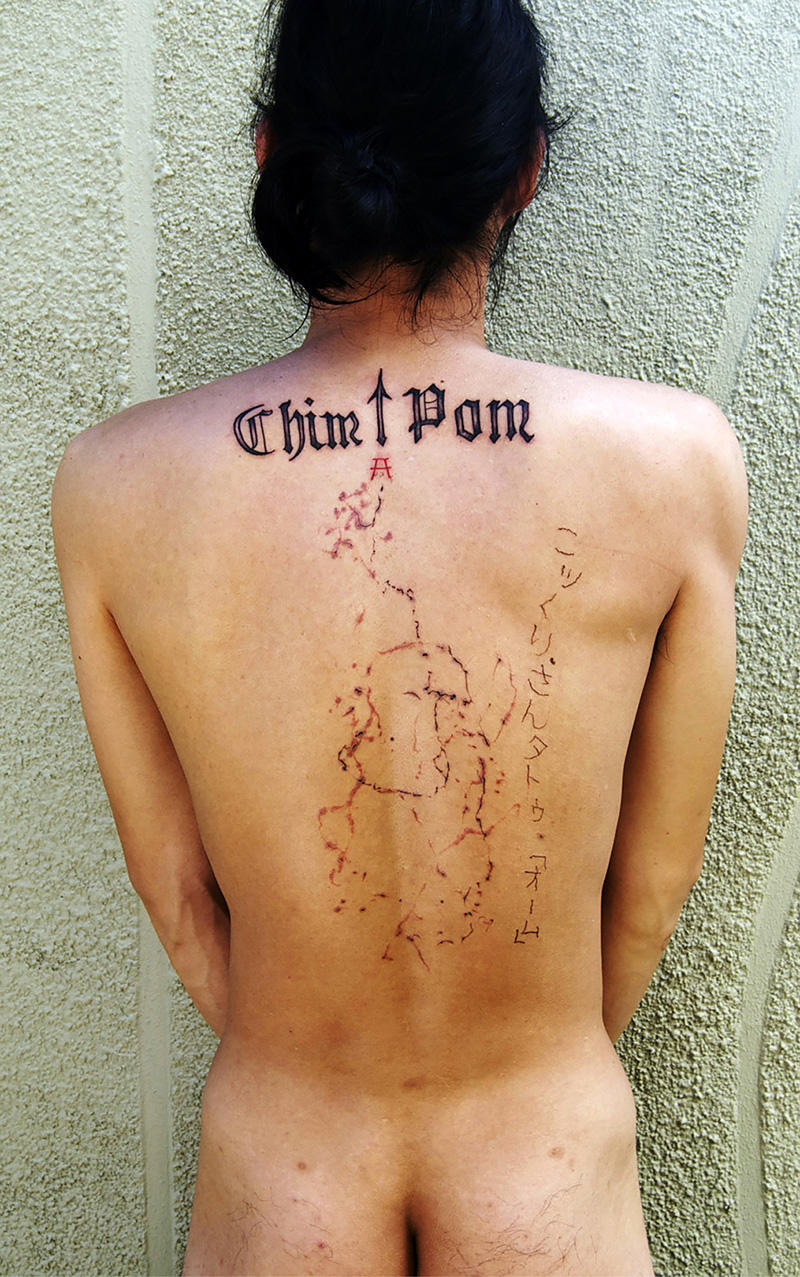
2008
Lambda print
83 x 52 cm
Courtesy: ANOMALY and MUJIN-TO Production, Tokyo

2008
Lambda print
83 x 52 cm
Courtesy: ANOMALY and MUJIN-TO Production, Tokyo
The necromantic act of kokkurisan [Japanese table-turning] became wildly popular in Japan in the 1970s. Participants each place their finger on a coin, positioned on a piece of paper with letters written on it. The coin then moves, allegedly due to the workings of a spirit summoned during a séance, and the letters on which the coin stops spell out words that can be interpreted as a message. Inspired by this necromancy, the five members of Chim↑Pom from Smappa!Group used a needle in place of a coin to inscribe a tattoo on Mizuno Toshinori’s back by means of automatic writing, and documented this act through video and photographs.
Mizuno undoubtedly experienced both the physical pain of being tattooed and the psychological anguish of being left with a messy and irremovable mark. What is shocking is the discrepancy between how the five members playfully move the needle about as part of a game and the graphic nature of the scars that will remain for a lifetime. This project, which was originally scheduled to be performed a total of ten times, has been further repeated on multiple occasions. The exhibition presents documentation of the project’s first installment, featuring Om, a sacred spiritual symbol in Hinduism and popular tattoo motif.
Don’t Follow the Wind
2015-
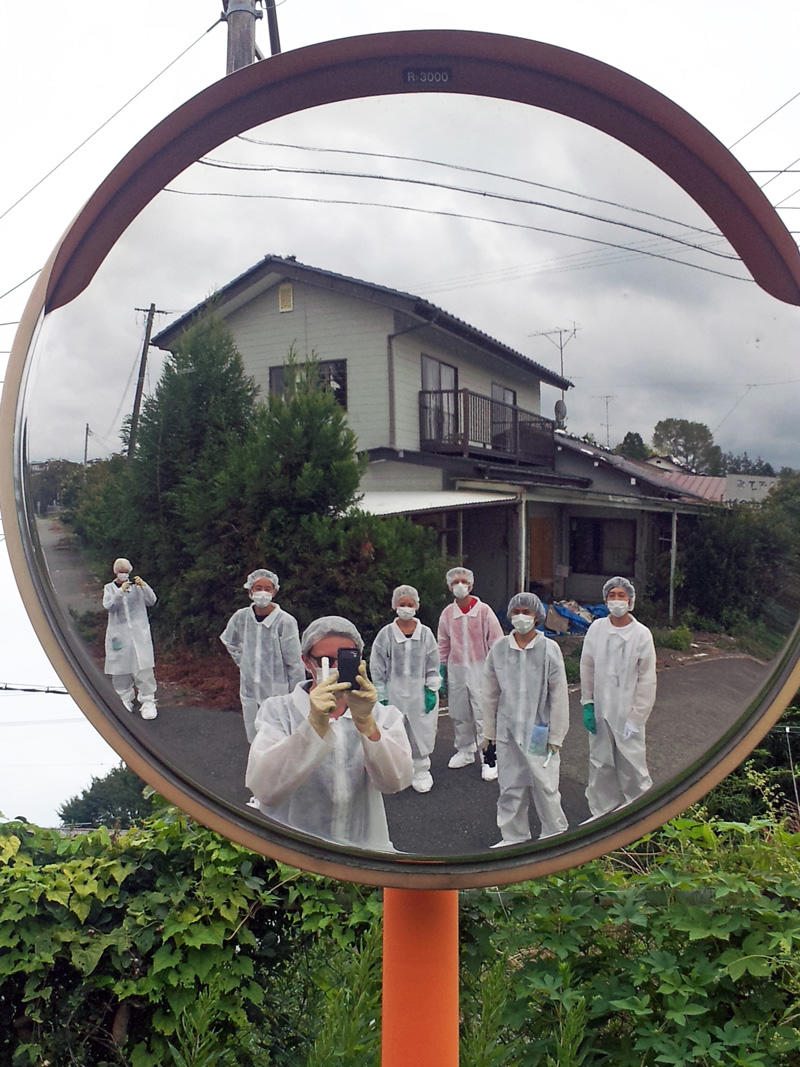
2015-
Courtesy: Don’t Follow the Wind Committee

2015-
Courtesy: Don’t Follow the Wind Committee
Don’t Follow the Wind is an ongoing international exhibition held since 2015 inside the restricted Fukushima Exclusion Zone (“difficult-to-return zone”) - an area that was evacuated due to the radiation contamination caused by the accident at the Fukushima Daiichi Nuclear Power Plant. Initiated by Chim↑Pom from Smappa!Group, the exhibition consists of new works developed by twelve participating artists from both Japan and abroad including themselves, installed in the zone at various sites that former residents gave them consent to make use of.
Part of the exhibit has been introduced at numerous locations outside Japan in the form of a mobile, itinerant outpost called “Non- Visitor Center.” The project itself, however, will remain largely inaccessible to the public until the area has been decontaminated and entry restrictions are lifted, thereby enabling residents to return to their homes. At the exhibition Don’t Follow the Wind: Non-Visitor Center, held in 2015 in Tokyo at the Watari-um Museum of Contemporary Art, exhibition tickets that can be used to view the works in the future when public access to the sites is granted, were sold.
At the moment, it is unclear when we will ever be able to see this exhibition, however. Viewers have no choice but to imagine the exhibition by relying on the images and information presented thus far by the artists. To “imagine” this exhibition means channeling our thoughts to the landscapes of these disaster-stricken areas that remain inaccessible to us. Furthermore, works exhibited in this environment that is not necessarily suited for storage are expected to deteriorate over time, and so when we are finally able to view them in person, they may not retain their original shape and form. In such an instance, we will no doubt find ourselves thinking about the original appearance of the works, the former lives of the local residents, and the time that has elapsed by that point.
Participating Artists: Ai Weiwei, Grand Guignol Mirai (Sawaragi Noi, Ameya Norimizu, Akagi Shuji, Yamakawa Fuyuki), Koizumi Meiro, Taryn Simon, Takeuchi Kota, Takekawa Nobuaki, Chim↑Pom from Smappa!Group, Nikolaus Hirsch & Jorge Otero-Pailos, Trevor Paglen, Eva and Franco Mattes, Miyanaga Aiko, Ahmet Öğüt
Curators: Don’t Follow the Wind (Chim↑Pom from Smappa!Group [Initiator], Kubota Kenji, Jason Waite, Eva & Franco Mattes)
Making the Sky of Hiroshima “PIKA!”
2009
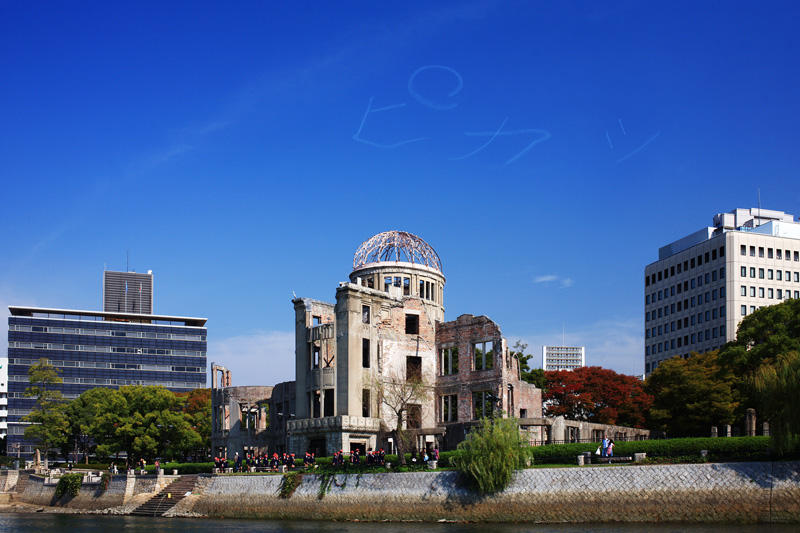
2009
Lambda print, video
66.7 x 100 cm (photo), 5 min. 35 sec. (video)
Courtesy: ANOMALY and MUJIN-TO Production, Tokyo
Photo: Bond Nakao
On October 21, 2008, Chim↑Pom from Smappa!Group chartered a skywriting plane and wrote the word “PIKA!” in the sky above the Atomic Bomb Dome in Hiroshima, evoking the sudden flash of light caused by the detonation of the atomic bomb. The intention was to visualize in a cartoonish manner the widespread indifference towards “peace” upon which contemporary Japanese society is based. The next day, however, the Chugoku Shimbun newspaper reported on the reactions of outraged citizens and a representative from an A-bomb victim organization that had condemned the act as “unpleasant,” leading to much social controversy. The city of Hiroshima immediately made contact with these A-bomb victim organizations, after which Chim↑Pom from Smappa!Group met with representatives of five organizations and made a formal apology for their failure to make an announcement in advance regarding the project. This dispute also resulted in the cancellation of their solo exhibition that had been scheduled to take place at Hiroshima City Museum of Contemporary Art. Since the incident, Chim↑Pom from Smappa!Group has continued to develop this project by engaging in repeated discussions with A-bomb victims and local citizens, at times working together in collaboration. In 2009, they published the book, Why Can’t We Make the Sky of Hiroshima “PIKA!”? (MUJIN-TO Production), which reported on and investigated the dispute, in addition to presenting the project at their solo exhibition HIROSHIMA!, held in Harajuku, Tokyo. Thereafter, the project has evolved further and traveled to various locations, with an “!” added to the title each time. In 2013, Chim↑Pom from Smappa!Group held their solo exhibition Hiroshima!!!!! at the former Bank of Japan Hiroshima Branch with the support of local citizens and art world figures, and also in 2019 presented an exhibition in New York titled Threat of Peace (Hiroshima!!!!!!).
PAVILION
2013-
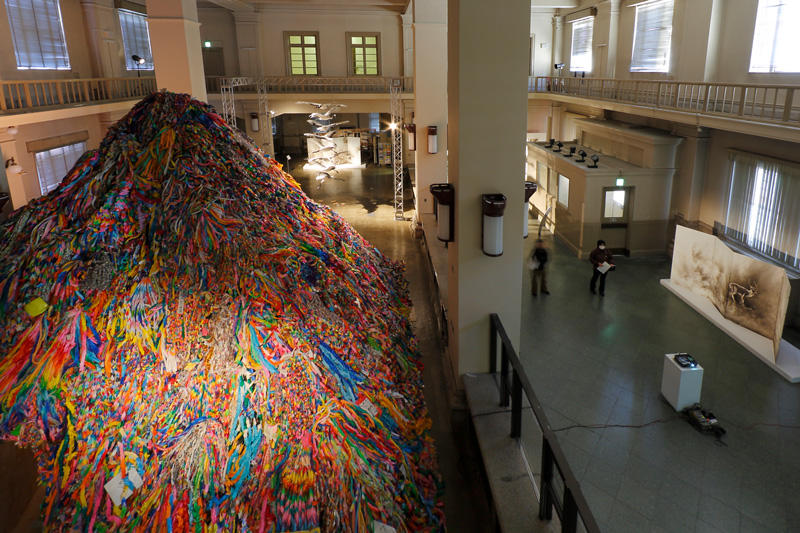
2013
Origami crane, glass, mixed media
Dimensions variable
Materials provided by Hiroshima City (origami crane)
Courtesy: ANOMALY and MUJIN-TO Production, Tokyo
Installation view: Hiroshima!!!!!, Former Bank of Japan Hiroshima Branch, 2013
Photo: Morita Kenji
Sasaki Sadako, a victim who suffered the effects of the atomic bombing of Hiroshima in 1945, persisted in her quest to fold a thousand origami cranes right up until her death at the age of twelve in wishing for her own recovery. Ever since, origami cranes have come to be regarded as a symbol of peace, and even today, countless origami cranes folded as a wish for peace are sent to Hiroshima City from all over the world. At the time, the city was experiencing difficulties storing the ever-increasing number of origami cranes, which they felt obliged to keep due to their significance and the sentiments that they embodied. When they learned this, Chim↑Pom from Smappa!Group borrowed these origami cranes and brought them to the Former Bank of Japan Hiroshima Branch that was the venue for their 2013 solo exhibition Hiroshima!!!!!, stacking them up to create a 7-meter-tall mountain-shaped installation. Thereafter, a ceremonial burning of the cranes was held as specified by the city. The work, reminiscent of a pyramid or ancient tomb, invited viewers to enter into its gigantic hollow and engage in the unique experience of being surrounded by countless origami cranes.
“PAVILION” is the title of a series of site-specific art based on drawing out the potential and utilizing the characteristics of the places and spaces in which the works are exhibited. While each work is different in content, several works have been produced under the same title.
Non-Burnable
2017
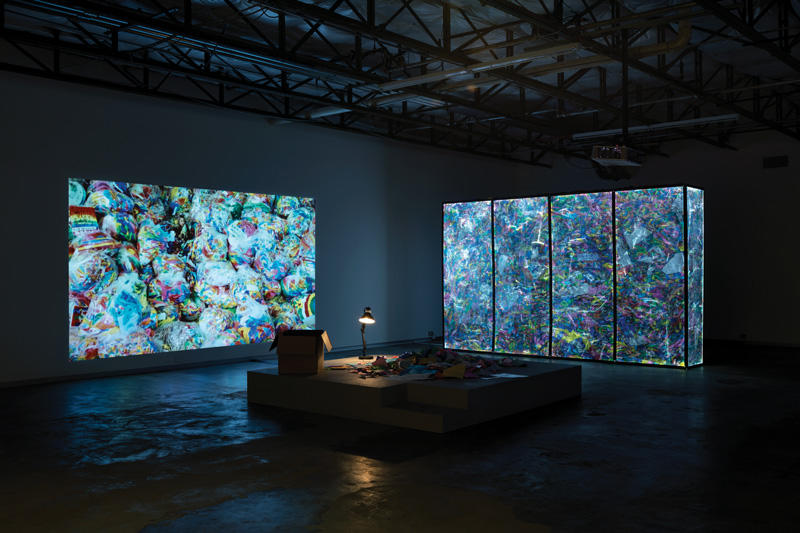
2017
Performance, workshop, origami crane, mixed media
Materials provided by Hiroshima City (origami crane)
Dimensions variable
Courtesy: ANOMALY and MUJIN-TO Production, Tokyo
Installation view: Non-Burnable, Dallas Contemporary, TX, US, 2017
Photo: Kevin Todora
Like PAVILION, this is a participatory work produced by Chim↑Pom from Smappa!Group using countless paper cranes that have been borrowed from Hiroshima City. In the performance video, Ellie unfolds the paper cranes sent from all over the world back into square sheets of origami paper while reading the messages written inside them. Having seen this, the audience is invited to fold the unfolded origami paper laid out on the desk in the exhibition gallery back into paper cranes again. These countless refolded paper cranes are then sent back to Hiroshima City. In this way, Chim↑Pom from Smappa!Group avoids the need for new storage space by trying to reduce the number of paper cranes, working with nothing but people’s thoughts and emotions being consummated through the recycling of actions and materials.
The title of the work references the fact that Hiroshima City regards the paper cranes as “items that should not be burned,” and stores them in a warehouse labeled “non-burnable goods.”
We Don’t Know God
2018
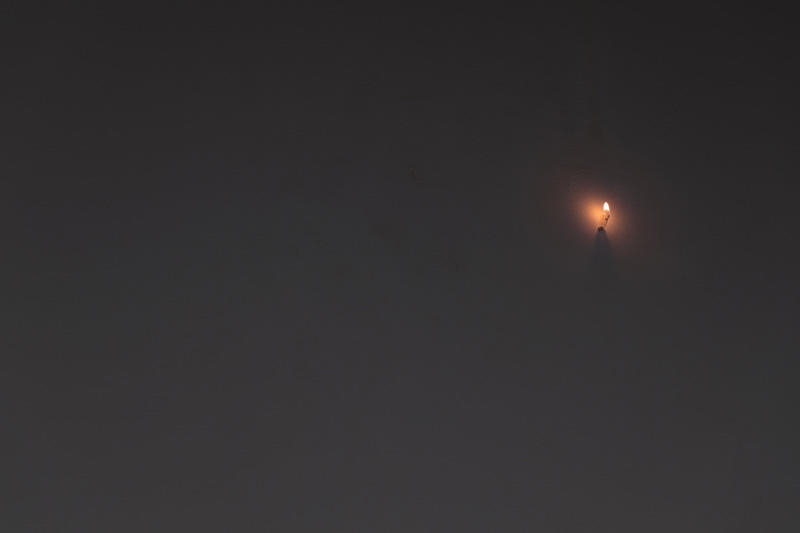
2018
Lingering flame from the Hiroshima atomic bombing in a white cube
Dimensions variable
Courtesy: ANOMALY and MUJIN-TO Production, Tokyo
Installation view: Grand Open - Marvelous Liberation -, ANOMALY, Tokyo, 2018
Photo: Morita Kenji
In this installation work, the embers from a fire that was started by the atomic bombing of Hiroshima is brought into the exhibition room, where it is kept burning. These embers are referred to as “The Flame of Peace.” These embers were originally brought from the scorched ruins of Hiroshima to Hoshino (currently part of the Yame City) in Fukuoka Prefecture, the hometown of Yamamoto Tatsuo, as a memento to commemorate his uncle who had fallen victim to the atomic bomb, and continued to burn thereafter. The flame was passed down to the village in 1968, and has since been dispersed across various locations all over Japan, allowing it to survive until today.
While Chim↑Pom from Smappa!Group has used the embers of the atomic bomb to produce various works such as The Peace Day, here the fire itself accompanied by a white wall constitutes a piece of art. Their goal is to pass the fire on to various museums around the world.
The title has multiple connotations: it refers to the fact that there are many atheists in Japan, and how the power of the atomic bomb is a ruthless force that makes one feel as if Buddha or any other God does not exist. It also alludes to how fire has been worshipped as a god since ancient times, and presents nuclear energy as a sort of invasion of the domain of an almighty God.
Never Give Up
2011
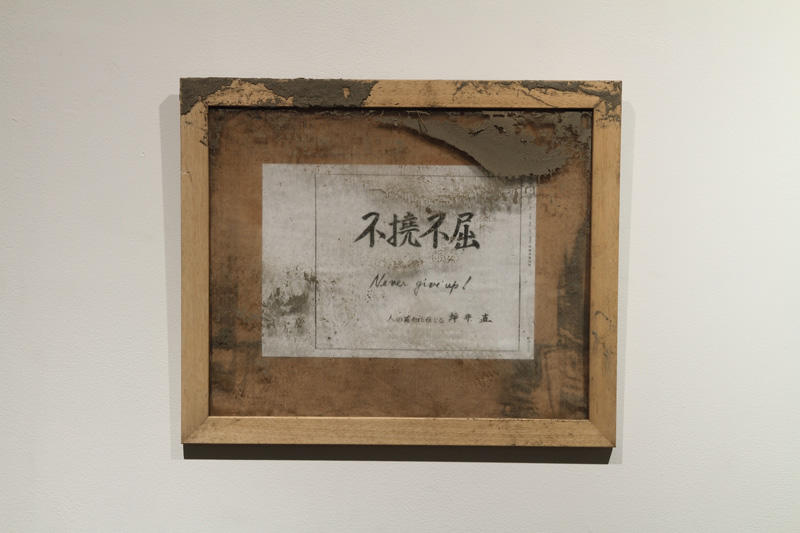
2011
Title by Tsuboi Sunao, devastated frame
39.7 x 47.3 cm
Courtesy: ANOMALY and MUJIN-TO Production, Tokyo
Using a muddy, discarded frame found in Minamisoma City, Fukushima Prefecture, Chim↑Pom from Smappa!Group framed a piece of fax paper that had been sent to them just after the Great East Japan Earthquake from Tsuboi Sunao, a representative of an A-bomb victim organization in Hiroshima. Tsuboi’s motto concerning his thoughts on Hiroshima and battle against cancer, as well as a call for the total abolition of nuclear weapons are written in calligraphic ink on the piece of paper, which also reflects his hopes for the reconstruction and revitalization of areas devastated by the earthquake. Chim↑Pom from Smappa!Group, who had become increasingly aware of and concerned about nuclear issues through their ongoing correspondence with Tsuboi following disputes caused by the “PIKA!” project, pointed out the need to revisit the history of Hiroshima in order to produce a series of work related to Fukushima. This work, which connects these two catastrophes surrounding nuclear energy, is the first work that Chim↑Pom from Smappa!Group produced in the wake of the earthquake.
LEVEL7 feat. “Myth of Tomorrow”
2011
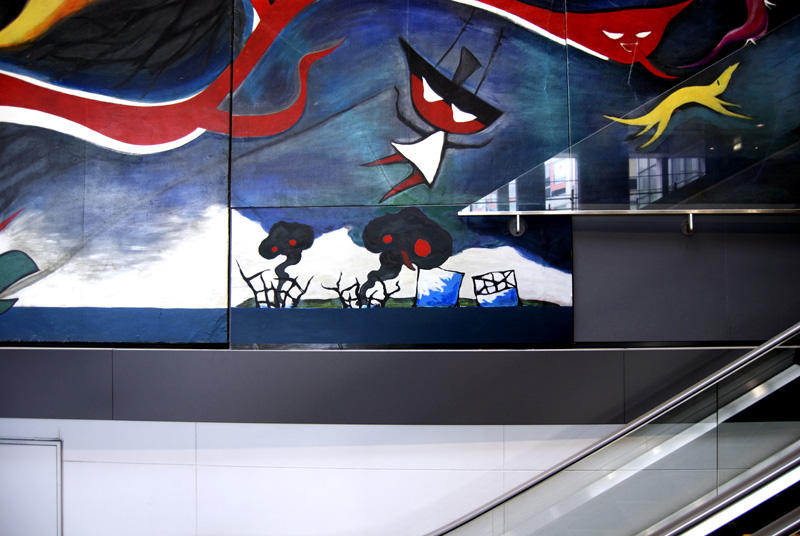
2011
Acrylic on paper, PVC panel, video and others
84 x 200 cm (painting), 6 min. 35 sec. (video)
Collection: The Taro Okamoto Memorial Museum, Tokyo
Courtesy: ANOMALY and MUJIN-TO Production, Tokyo
Late at night on April 30, 2011, following the Great East Japan Earthquake and the accident at the Fukushima Daiichi Nuclear Power Plant, Chim↑Pom from Smappa!Group carried out a guerilla-style installation project in which a panel depicting this accident was added to the bottom-right corner of the existing mural Myth of Tomorrow (1968-1969) by Okamoto Taro, which is situated in a connecting passageway in Shibuya Station. The image of black smoke rising from the power plant in the shape of a skull was painted in the same style as the mural. By making this addition appear to be a part of Okamoto’s original mural chronicling the tragedies caused by the explosion of the atomic bomb, Chim↑Pom from Smappa!Group intended to illustrate the fact that the accident at the Fukushima Daiichi Nuclear Power Plant had been newly added to the tragic history of nuclear power in Japan including the atomic bombing of Hiroshima and Nagasaki, and the tuna fishing boat “Daigo Fukuryu Maru (Lucky Dragon Five)” that had been contaminated by nuclear fallout from a thermonuclear weapon test. The work coexists permanently in our minds alongside Myth of Tomorrow, and as Chim↑Pom from Smappa!Group states, “in the same way that we look at history or radiation, what is needed to see the work through this blank space is no longer our eyes, but our imagination,” and “we believe imagination is the very possibility for ground zero, and the most fundamental power that we can use to create the future.”
REAL TIMES
2011
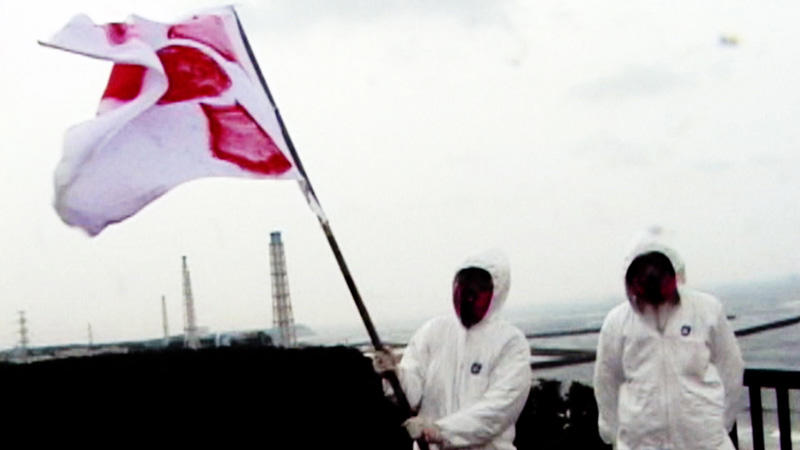
2011
High-definition video installation
11 min. 11 sec.
Collection: Mori Art Museum, Tokyo
Courtesy: ANOMALY and MUJIN-TO Production, Tokyo

2011
High-definition video installation
11 min. 11 sec.
Collection: Mori Art Museum, Tokyo
Courtesy: ANOMALY and MUJIN-TO Production, Tokyo
This video work was filmed just one month after the accident at the Fukushima Daiichi Nuclear Power Plant, on the premises of the Tokyo Electric Power Company (TEPCO) facility, located approximately 700 meters from the plant. Dressed in protective suits, Chim↑Pom from Smappa!Group’s members are seen making their way to a lookout point previously promoted as a site offering spectacular views of the sunrise. The path to the lookout is eerily empty with no people in sight, but deep fissures and depressions can be seen here and there across the ground. Having arrived at the lookout, Chim↑Pom from Smappa!Group stretched out a white flag, spray painted a red circle on it so that it resembled the Japanese flag, and changed it further to a radiation symbol. They then raised the flag in a manner reminiscent of the moon landing, or what is customarily done upon reaching the summit of Mt. Everest, as white smoke continued to rise from the power plant in the background.
There had been much confusion over the nuclear accident situation in Japan at the time. Chim↑Pom from Smappa!Group created this work in hopes of confirming with their own eyes the reality that may not have been reported in the mass media. The title contains a number of connotations: “real time” in the sense of the present moment right now, the word “times” used in the title of Charlie Chaplin’s film Modern Times, as well as the names of newspapers like The New York Times, reflecting the artist’s intention to “communicate the reality of the present.”
KI-AI 100
2011
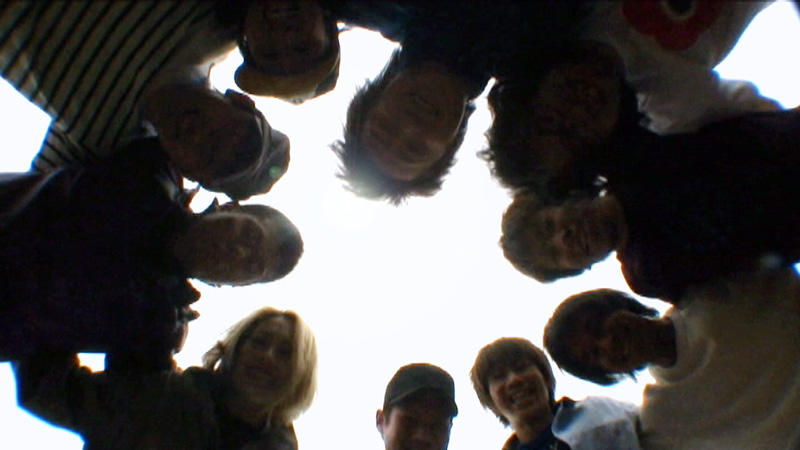
2011
Video
10 min. 30 sec.
Collection: Mori Art Museum, Tokyo
Courtesy: ANOMALY and MUJIN-TO Production, Tokyo

2011
Video
10 min. 30 sec.
Collection: Mori Art Museum, Tokyo
Courtesy: ANOMALY and MUJIN-TO Production, Tokyo
KI-AI 100 is one of a number of projects initiated by Chim↑Pom from Smappa!Group immediately after the 2011 Great East Japan Earthquake that represented their hopes for recovery from the disaster and a prompt solution for the nuclear accident that had occurred. The video work was produced in May 2011, by the members of Chim↑Pom from Smappa!Group in collaboration with young local residents and quake victims from Soma City, Fukushima. Gathered together in a circle outdoors where devastating traces of the tsunami still remained, the participants yelled out 100 phrases in turn to encourage themselves in the midst of these harsh circumstances, having lost their homes and now living in fear of radiation. Various “ki-ai,” the Japanese term for the shouting that demonstrates fighting spirit in martial arts, were yelled out spontaneously, including words of encouragement like “let’s do our best with the reconstruction!” “chin up, Tohoku!,” as well as more personal wishes like “I’m gonna get a girlfriend this year!” This work depicts the cooperation and joint struggle of human beings who continue to harbor hope for the future and encourage each other through words despite being forced into a desperate situation.
“The other side”
2014-2017
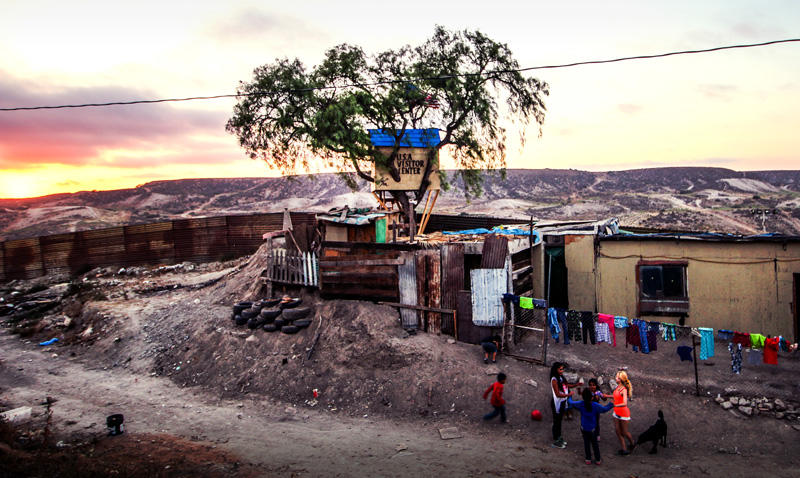
2017
Giclee print
66 x 100 cm
Collection: Miyanomori Museum of Art, Sapporo
Courtesy: ANOMALY and MUJIN-TO Production, Tokyo
Photo: Matsuda Osamu
When Chim↑Pom from Smappa!Group member Ellie was about to visit Hawaii for a television shoot, her visa application to enter the United States was denied due to the immigration restrictions that had been placed on one of the crew members she was traveling with. Taking this personal problem as a starting point, in 2014 Chim↑Pom from Smappa!Group began creating a series of works with the U.S.-Mexico border issue as a theme. In 2016, when immigration policy became a major issue in the U.S. presidential election, Chim↑Pom from Smappa!Group visited a slum area known as Libertad (“liberty” in Spanish) located in Tijuana along the Mexican border, and with the cooperation of local residents, built a DIY tree house just beside the border wall. Named “U.S.A. Visitor Center,” the building was created for locals who were living right next to the U.S., but unable to go beyond the wall and enter it. The windows of the house provided views overlooking the vast and panoramic landscape of “the land of the free.”
Conceived in relation to this work was The Grounds. Here, a hole was dug deep in the ground on the Mexican side along the border, and Ellie, who was unable to enter the U.S., crawled inside. She legally left her footprints at the bottom of the hole in front of the very boundary between Mexico and the U.S. The mold of Ellie’s footprints cast in plaster allude to the presence of a territory that belongs to neither the U.S. nor Mexico, just beneath the ground on which the border wall stands.
“The other side” is a common term that Mexicans living on the Mexico side of the U.S.-Mexico border use when referring to the U.S. At the same time, the title also alludes to various “other sides” that currently exist, such as the nuclear exclusion zone caused by the accident at the Fukushima Daiichi Nuclear Power Plant, the lands that immigrants and refugees from all over the world are making their way to, and domains that lie beyond the reach of all borders and boundaries.
“May, 2020, Tokyo”
2020
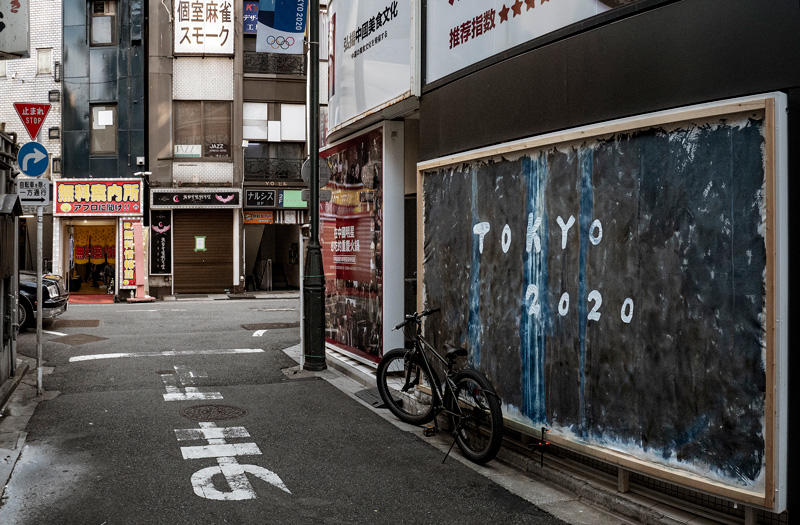
2020
Cyanotype print, gelatin, canvas, iron frame
175.5 x 352.3 x 4.5 cm
Takahashi Ryutaro Collection, Tokyo
Courtesy: ANOMALY and MUJIN-TO Production, Tokyo
Production view: Shinjuku, Tokyo
This series of work was produced in Tokyo in May 2020, during which the Japanese government declared the first-ever State of Emergency due to the spread of COVID-19. Chim↑Pom from Smappa!Group installed canvases painted with cyanotype sensitizer on various billboards located across the city, and by leaving them outside over a period of two weeks, made “blueprints” recording traces of the city and its environment - rain, sunlight, flickering shadows, and various other phenomena - onto these surfaces. In this way, Chim↑Pom from Smappa!Group employed the photographic technique of cyanotype prints to capture the very sights of the city that has lost its vitality due to officials urging people to exercise self-restraint in going out. Parts of the canvas that had been covered with pieces of paper to prevent exposure emerge in the form of white texts that spell out slogans such as “TOKYO 2020” and “new normal.” While numerous public slogans like “stay home” were promulgated one after another, the decision was made to postpone the Tokyo Olympics and Paralympics to 2021. However, it was announced that its official name would still include the year “2020.”
The word “blueprint” is also used to refer to a forecast regarding the future. In this series, Chim↑Pom from Smappa!Group uses simple words and phrases to express the reality that 2020, envisioned as a year of festivities, has been compromised due to the spread of viral infections and the postponement of these sporting events, giving rise to a slew of unpredictable circumstances. Produced just a month after the state of emergency was announced, these works are gigantic photographic documents that mark a historic moment in time, while at the same time appearing like paintings rendered in rough and dynamic brushstrokes.
“Thank You Celeb Project - I’m BOKAN”
2007-2008
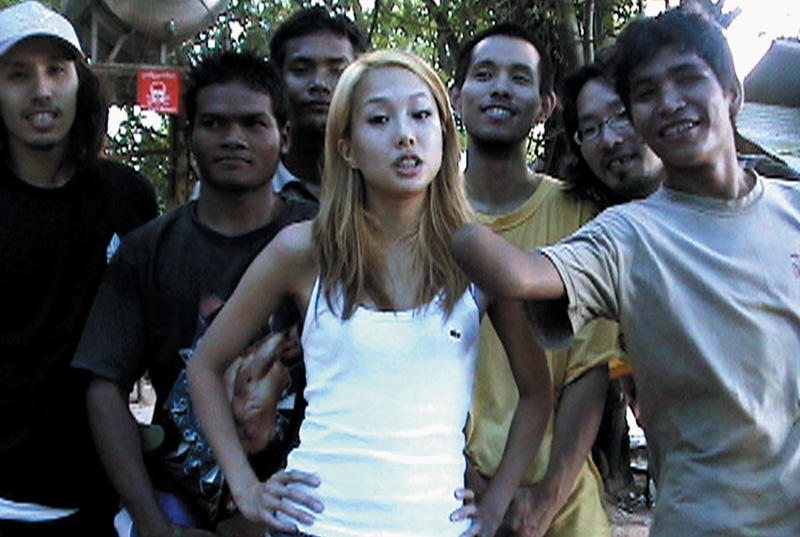
2007
Video
1 min. 53 sec.
Courtesy: ANOMALY and MUJIN-TO Production, Tokyo
Intending to engage in charity work as an act of noblesse oblige (*), Chim↑Pom from Smappa!Group visited Cambodia at their own expense to carry out a landmine defusing and donation project in one of the nation’s minefields. Countless landmines remain buried in the ground in Cambodia as a result of the Vietnam War and the Cambodian Civil War, and still cause many casualties today. With the help of local residents who voluntarily work to clear these landmines, Chim↑Pom from Smappa!Group detonated a number of Ellie’s personal belongings and a life-size plaster figure of her in the process of defusing unexploded landmines. After returning to Japan, Chim↑Pom from Smappa!Group organized a charity auction in Tokyo. Ellie and Ito Seiko served as the auctioneers and sold the exploded items as art objects. The auction raised 2.1 million yen in total, and the full amount of the artist’s share was donated to Cambodia.
This project consists of a video of their activities in Cambodia along with the exploded items, and is also documented on DVD. It serves to question the economic disparity that exists between developed and developing countries, as well as the close relationship between art and capitalism.
* Noblesse oblige is a standard moral view in Western society that nobility extends beyond mere entitlement, and requires people who hold such status to fulfill social responsibilities and obligations.



